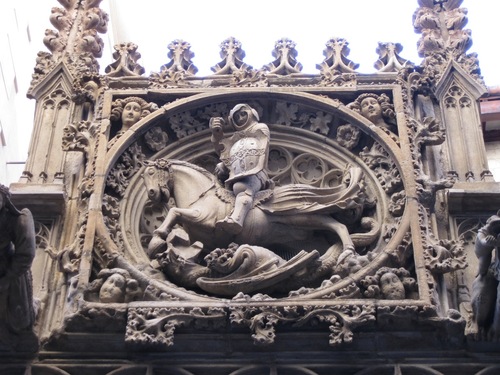
Spain is so large and so diverse that it’s hard to think of hitting all the highlights in just 2 weeks. So we've fudged the meaning of two weeks here, giving you a 17 day itinerary. If there's no way you can devote that amount of time, you can get back down to two weeks by eliminating Bilbao, Burgos and Estorial.
Much of your travel is by train, making a one-country Eurail Pass an economical way to go. See www.eurail.com for details. Tip: You'll also be taking some in-country flights, which can be quite affordable if you purchase them well in advance, and pack lightly (luggage fees can be steep). Also make reservations as far ahead as possible to visit the Alhambra in Granada and the Alcázar in Sevilla.
If you have more time than just two weeks, you can take in not only Barcelona but the Benedictine monastery of Montserrat, built into a jagged mountain, as well as Figueres to see the Salvador Dalí museum -- and maybe get in some beach time at Tossa de Mar, our favorite sands in all the Costa Brava.
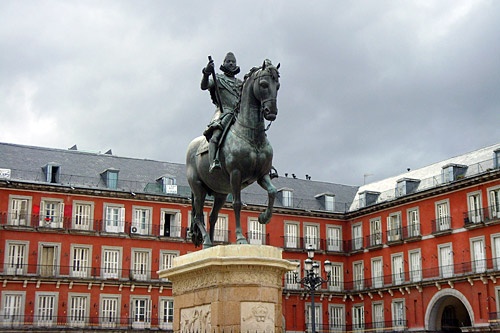
Days 1 & 2: Madrid
Madrid was a backwater until Felipe II moved his court here in 1561.
Take a flight that arrives in Madrid as early as possible. Check into your hotel and hit the nearest cafe for a pick-me-up cafe au lait and croissant before sightseeing. Take the Metro to Atocha or Banco de España to begin your tour of the Museo del Prado, allowing at least 2 hours for a brief visit. Since you can't see it all, concentrate on the splendid array of works by Velázquez, and take in some of the works of Francisco de Goya, including his Clothed Maja and Naked Maja.
Break for lunch at Plaza de Santa Ana, known for its outdoor terrazas. This was the center of an old neighborhood for literati, attracting such Golden Age authors as Lope de Vega and Cervantes. Hemingway drank here in the 1920s.
Walk along Calle Mayor, past Plaza de la Villa and some of the city’s oldest buildings, to the Palacio Real. The royal palace testifies to the ornate taste of the Bourbon kings; the Royal Kitchen and Armory tell fascinating stories too.
After lunch, walk west to Puerta del Sol, the very center of Madrid. This is the Times Square of Madrid. Northwest of the square you can visit Monasterio de las Descalzas Reales, Madrid's art-filled convent from the mid-16th century and a true treasure trove.
After perhaps a siesta at your hotel, head for Plaza Mayor, Madrid's most beautiful square and liveliest hub in the early evening. For dinner, patronize Hemingway's favorite restaurant, Sobrino de Botín.
On Day 2, take the Metro to Atocha for a visit to Museo Nacional Centro de Arte Reina Sofía, whose main attraction is Picasso's masterpiece Guernica. Here you can also view one of the greatest collections of modern art in Spain, taking at least 2 hours. In the afternoon, view Madrid's third great art museum, Museo Thyssen-Bornemisza, absorbing its many treasures. A visit will easily absorb at least 2 hours of your time.
Concentrate on the Spanish masters: Velázquez, El Greco, and Goya. Stroll in Parque del Retiro and a quick lunch—maybe a calamares sandwich at El Brillante. Round off a bohemian day with a tapas crawl around Las Letras and a flamenco show at Casa Patas or Cardamomo .
In the early evening, join in that ritual of tasca hopping, going from one bar or tavern to another and sampling hot and cold tapas or small plates of Spanish appetizers, ranging from fresh anchovies to the tail of a bull. You can discover plenty on your own, virtually on every street corner. After all that food and drink, you'll hardly need to order dinner. Stagger back to your hotel or else attend a flamenco show.
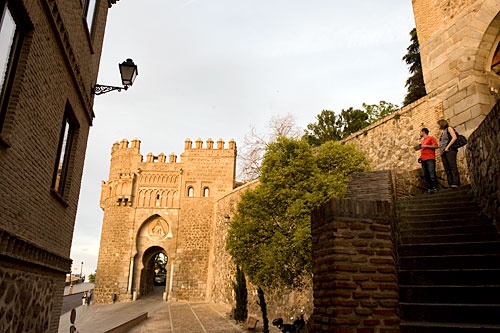
Day 3: Day Trip to Toledo
Having survived 2 days in the capital of Spain, bid adios and take a RENFE train to Toledo. These depart frequently from Madrid's Chamartín station (trip time: 1 1/2 hr.).
Much of Spain's history took place behind Toledo's old walls. There is so much to see here that you need 2 days, but on a hurried visit you can visit the fortified palace, the Alcázar, with its army museum; and the crowning glory of the city, the Catedral de Toledo. The masterpiece of El Greco, The Burial of the Count of Orgaz, rests in Iglesia de Santo Tomé. If time remains, see Casa y Museo de El Greco, or the House and Museum of El Greco, although the artist didn't actually live here. Toledo is known for its damascene work, so pick up a souvenir before returning to Madrid by train that night.
Day 4: Side Trip to Segovia
While still based in Madrid, begin Day 4 by taking an excursion to Segovia, leaving from Madrid's Chamartín station and arriving 2 hours later. The thrill of visiting the most spectacularly sited city in Spain is to view its Alcázar, which rises starkly above the plain like a fairy-tale castle created by Disney. You can also view the Cabildo Catedral de Segovia and the town's architectural marvel, Acueducto Romano. After lunch in Segovia, head 11km (7 miles) southeast to view the Palacio Real de La Granja, the summer palace of the Bourbon kings. Return to Segovia and take the train back to Madrid.
Day 5: Side Trip to El Escorial
Vying with Toledo as the most popular day trip from Madrid, the half monastery/half royal mausoleum of San Lorenzo de El Escorial is about an hour from Madrid's Atocha station. Felipe II constructed this mammoth complex for "God and myself," with its splendid library, palaces, and some of the world's greatest art. You can spend a full day here, breaking only for lunch, as you wander the art galleries and state apartments, including the throne room.
If you have time, make a side trip to El Valle de los Caídos (the Valley of the Fallen), a moving and evocative monument dedicated to the caídos or "fallen" who died in the Spanish Civil War in the late 1930s. Return to Madrid in the evening.Day 6: Burgos ★★ & Bilbao ★★★
You’ll be in the company of pilgrims when you visit the Catedral de Santa María in Burgos. Packed with paintings and sculpture, this magnificent Gothic cathedral is the resting place of the swashbuckling Spanish hero El Cid. After lunch, take an afternoon train to Bilbao. Explore the narrow streets of the city’s old quarter, the Casco Viejo, and ponder this city’s remarkable transformation over a glass of wine and creative pintxos in Plaza Nueva.
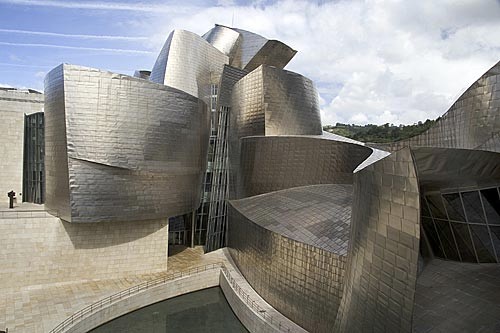
Day 7: Bilbao ★★★
Last night was old Bilbao. This morning is the new city. Get an early start so you can walk the riverfront before spending several hours admiring the Guggenheim Museum inside and out. Then head to the Museo Marítimo Ría de Bilbao nearby. Built on the site of a shipyard, it tells the extraordinary story of Bilbao’s urban reinvention, replacing the scars of centuries of heavy industry with cutting-edge architecture and commerce. Make sure you’ve reserved seats on the afternoon train to Barcelona, which will give you a chance to catch up on sleep. It gets in after 10pm, just in time for a late Catalan dinner.
Day 8: South to Seville, Capital of AndalusiaFly as early as possible on the morning of of Day 6 (or consider flying the evening before), to experience the glories of Seville. We like to acclimate ourselves by wandering the narrow streets of Barrio de Santa Cruz, the most evocative district, with its medieval streets, pocket-size plazas, and flower-filled wrought-iron balconies or tiled courtyards.
After that, head for the Catedral de Sevilla and Giralda Tower. The cathedral is the largest Gothic building in the world and the third-largest church in Europe. After spending 1 1/2 hours here, climb La Giralda, an adjacent Moorish tower erected by Islamic architects in the 12th century.
After lunch, head for the Alcázar, the other great architectural monument of Seville, which lies north of the cathedral. This is the oldest royal residence in Europe still in use, dating from the 14th century. Allow 1 1/2 hours for a hurried visit. With time remaining, visit Museo de Bellas Artes de Sevilla, a converted convent housing some of Andalusia's greatest artwork, including masterpieces by El Greco and Murillo. A standard visit takes 1 1/2 hours.
As the afternoon fades, go for a stroll through Parque María Luisa, which runs south along the Guadalquivir River. In summer you can rent a boat and go for a refreshing sail. After dinner in the Old Town, head for a flamenco show if you still have energy.
Day 9:Córdoba
Early in the morning, take one of the frequent trains running between Córdoba and Seville. The fastest train, the AVE, takes only 45 minutes. Córdoba was once the capital of the Islamic nation in the West. Take 2 hours to visit its Mezquita-Catedral de Córdoba, the greatest Islamic masterpiece remaining in the Western world. Its stunning labyrinth of columns and red-and-white-striped arches alone is worth the visit. With remaining time you can visit Alcázar de los Reyes Cristianos, a stellar example of military architecture where Ferdinand and Isabella once governed.
Day 10: Granada ★★★
Arrive as early as possible. After a reviving chocolate and churros at López Mezquita, take a stroll around the central district and visit the Catedral and its adjacent royal chapel, the Capilla Real, where you can see the tombs of Fernando and Isabel, who completed the Reconquest by taking Granada in 1492. From Plaza Nueva, take an electric bicycle tour around the hilly barrios of Moorish Albaicín and Sacromonte, with its Gypsy caves. Watch the sun go down at the Mirador de San Nicolás, watching the Alhambra on the opposite hill glow like an object of desire. Then hit Granada’s tapas scene, one of Spain’s best.
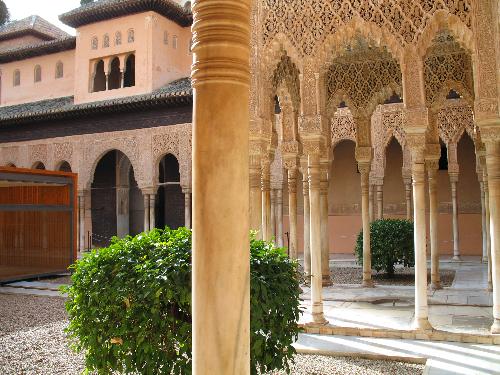
Day 11: Granada: The Alhambra ★★★
Months ago, you reserved a ticket with an early entrance time to the Alhambra. Take lunch with you so you can linger with a picnic in the gardens of the Generalife, and leave time to admire the beautiful Hispano-Muslim art in the Museo de la Alhambra, located in the Palacio de Carlos V. If there’s time, walk back into town past the guitar makers and souvenir shops on Cuesta de Gomérez. You have two options for tonight: Either take the 5pm train to Sevilla to spend a late night tapas hopping, or sleep in Granada, then rise early to catch a morning train to Sevilla.
Day 12: Valencia ★★
Take a morning train to Valencia, and spend the afternoon hitting the Old Town sights, including the Catedral and its cool Gothic tower, El Miguelete. In the late afternoon, head to Playa Malvarrosa, the best of the in-city beaches; that way you’ll be ready to eat Valencia’s famous paella at one of the beachfront restaurants.
Day 13: Valencia: City of Arts & Sciences ★★★
Make an early start to visit the Mercado Central fresh food market, one of the largest in Europe, a treasure house of locally raised produce. Walk along the Jardí del Túria gardens to reach the City of Arts & Sciences and spend the rest of the day inhabiting the future. Unfortunately, rail connections to Granada are still in the past: Your best bet is to take the overnight bus which leaves Valencia at 1 minute to midnight.
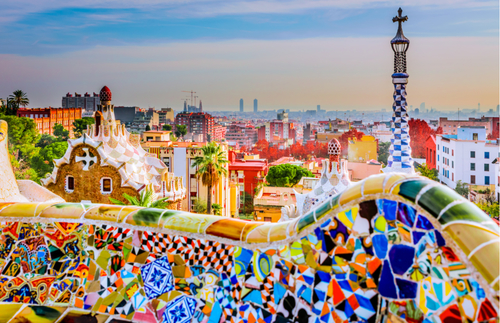
Arrive as early as you can on Day 14 to walk the narrow cobblestone streets of the Barri Gòtic, the Gothic Quarter, the single most fascinating old ghetto of any street in Europe. There is a discovery to be made at every turn. As you stroll, you'll think you're walking back into the Middle Ages. The highlight of your morning tour here will be the Catedral de Barcelona, dating from the 1200s and the greatest example of Catalonian Gothic architecture.
After you see the Gothic Quarter, continue on to Las Ramblas. This is the most famous street in Spain, alive at all hours day and night. Stretching from Plaça Catalunya in the north to Plaça Portal de la Pau along the waterfront, this is a boulevard of flower vendors, booksellers, palaces, shops, and cafes -- a perfect introduction to life as uniquely lived in Barcelona. At the end of the tree-lined boulevard, opening onto the waterfront, is a monument to Columbus.
Once you're at the port, walk east along Moll de la Fusta for its views of Barcelona port life, coming to a halt at Parc de la Ciutadella, where you can sit on a park bench and rest your feet.
Immediately south of the park is the waterfront and old fishermen's quarter of Barceloneta, ideal for a seafood lunch.
After lunch, continue north to La Sagrada Família, Europe's most unconventional church. This uncompleted work is by the incomparable Antoni Gaudí (1852-1926), the leading exponent of Catalan modernisme.
To cap your afternoon, take the funicular to the fountains of Montjuïc, where you'll see Barcelona spread out at your feet. The illuminated fountain display, Fuentes Luminosas, is one of the highlights of a trip to Barcelona. You can hang out here and make an evening of it, visiting the Poble Espanyol in Parc de Montjuïc, a re-created Spanish village constructed in 1929 for the World's Fair. You can also have dinner in the faux village.
On Day 15, visit Museu Picasso in the Gothic Quarter, allowing yourself at least 1 1/2 hours. Stroll through the surrounding district, Barri de la Ribera, which is filled with Renaissance mansions and an intriguing collection of art galleries that surround Picasso's trove of treasures.
Before lunch you can still take in the art at Museu Nacional d'Art de Catalunya, Catalonia's major art gallery, containing one of the world's greatest collections of Romanesque art. Allow 2 hours for a visit.
In the afternoon, visit Fundació Antoni Tàpies. Here you can see the artist's statements in abstract expressionism. That same afternoon you can visit the Fundació Joan Miró. The foundation owns 10,000 works, mainly paintings and sculpture, by this Catalan surrealist. To reach it, you can return to Parc de Montjuïc where, hopefully, you can watch the sun set over the skyline and port of Barcelona. Allow at least 1 1/2 hours for visits to each of these museums.
Devote Day 16 to all the highlights of Barcelona you've missed so far. Pay a morning visit to Gaudí's idiosyncratic park, Parc Güell. Designated a World Heritage site by UNESCO, this colorful creation of bizarre architectural monuments dates from 1922 and includes such Gaudí fantasies as the "Room of a Hundred Columns," with its 84 crooked pillars. On-site is a gingerbread-style house where Gaudí lived from 1906 to 1926. (It's been turned into a museum.) You can spend 2 hours wandering around this uncompleted park before heading back to Las Ramblas for lunch at a sidewalk cafe, where you can watch an ever-changing parade of colorful characters.
After lunch, and for a change of pace, visit Palau Reial (Royal Palace), the former palace of the counts of Barcelona. Be sure to check out the Saló Del Tinell, where Isabel and Ferdinand received Columbus after his triumphant return from America. In the afternoon, head for Tibidabo Mountain for the most panoramic views of Barcelona. A funicular takes you to its summit at 488m (1,600 ft.).
Climax your tour of Barcelona by an early evening paseo along the Eixample district. Armed with a good map, take in Plaça de Catalunya, the geographic heart of the city, along with Passeig de Gracia, the boulevard of fashionable shops, and Gaudí's masterpiece, the apartment building of Centre Cultural Caixa Catalunya (commonly called La Pedrera or Casa Milà).
If you have a bit more time, add in the following:
Day 17: Side Trip to MontserratFrequent trains leave from Plaça d'Espanya in Barcelona, taking you to the historic monastery of Montserrat 56km (35 miles) northwest of Barcelona. The final approach to the lofty mountaintop citadel is by aerial cableway. You can make a day out of this visit, including time spent getting there and back; a one-way trip takes an hour.
Stop in at the Montserrat tourist office and pick up a map to aid you in mountain walks, some of which are reached by the Santa Cova funicular. You can order lunch at Montserrat's only hotel, Abat Cisneros. Time your visit so you can listen to the 50-member Escolanía at 1pm daily. It's one of Europe's oldest and most renowned boys' choirs. Return to Barcelona in the evening for a stroll along Las Ramblas.
Day 18: Girona & the Dalí Museum
On Day 12, rent a car in Barcelona and set out to explore the highlights of the province of Catalonia. Your first stop is the ancient city of Girona, where you can book a hotel for the night.
In 2 hours, you can explore the medieval city, the most important attractions being its magnificent Catedral and its Museu d'Art, the latter installed in a Romanesque and Gothic palace.
In the afternoon, drive northeast 37km (23 miles) to the little town of Figueres. Here you can visit the number-one attraction in all of Catalonia, Teatre Museu Dalí. The incomparable Dalí was born in this town in 1904, and he honored his birthplace by leaving a vast array of work, making this teatro the most visited museum in Spain after the Prado. Many of his hallucinatory images are on display; a highlight is the Mae West Room. Return to Girona and join the locals in an early-evening paseo along the historic streets of the Old Town.
Day 19: The Costa Brava
The so-called "wild coast" of Spain extends from the French border south toward Barcelona for 153km (95 miles). A drive along this rugged coast is one of the most memorable in Spain.
From Girona, check out of your hotel and drive east to our favorite resort along the coast, Tossa de Mar, a former 12th-century walled town with good beaches only 90km (56 miles) north of Barcelona. Check into a hotel here and get in some beach time before lunch.
In the afternoon, drive north for a visit to the most charming town along the coast, Cadaqués, the last resort on the Costa Brava, a distance of 196km (122 miles) north of Barcelona. The unspoiled village is enchantment itself, fancifully dubbed "the St. Tropez of Spain." Return to Tossa de Mar for the night.
Day 20: Sitges & Tarragona
After checking out of your hotel at Tossa, head south along the coast, bypassing Barcelona to arrive at Sitges by midmorning.
Although it has a strong gay patronage, this is a resort for all sexual orientations. Once it was a retreat for such artists as Salvador Dalí and Picasso. You can spend some time on the sands as well as visit museums. If you have time for only one, make it Museu Cau Ferrat, where Catalan artist Santiago Rusiñol combined two 16th-century fishermen's cottages to create his house and studio, which is now a museum.
From Sitges, continue south to Tarragona for the night, a total distance from Barcelona of only 97km (60 miles). Perched on a rocky bluff above the Mediterranean, this is an ancient Roman port city. Walk its fashionable rambles (wide boulevards), checking out its Catedral and its Passeig Arqueològic, an archway that leads to a walk along ancient ramparts built by the Romans.
Tarragona has some good restaurants serving Catalan specialties and fresh seafood. After an overnight, you can return to Barcelona in the morning for your flight back home.
Note: This information was accurate when it was published, but can change without notice. Please be sure to confirm all rates and details directly with the companies in question before planning your trip.








